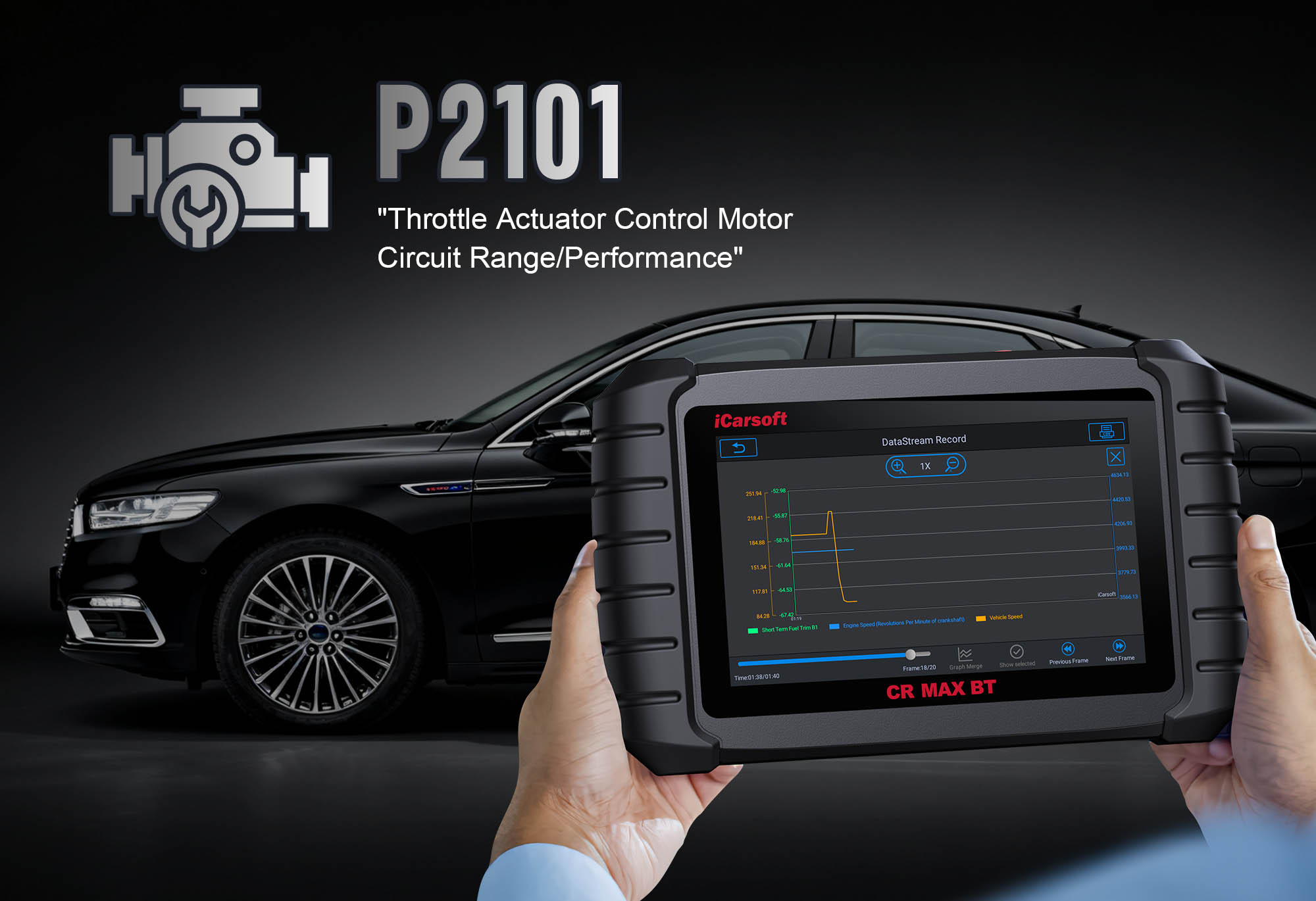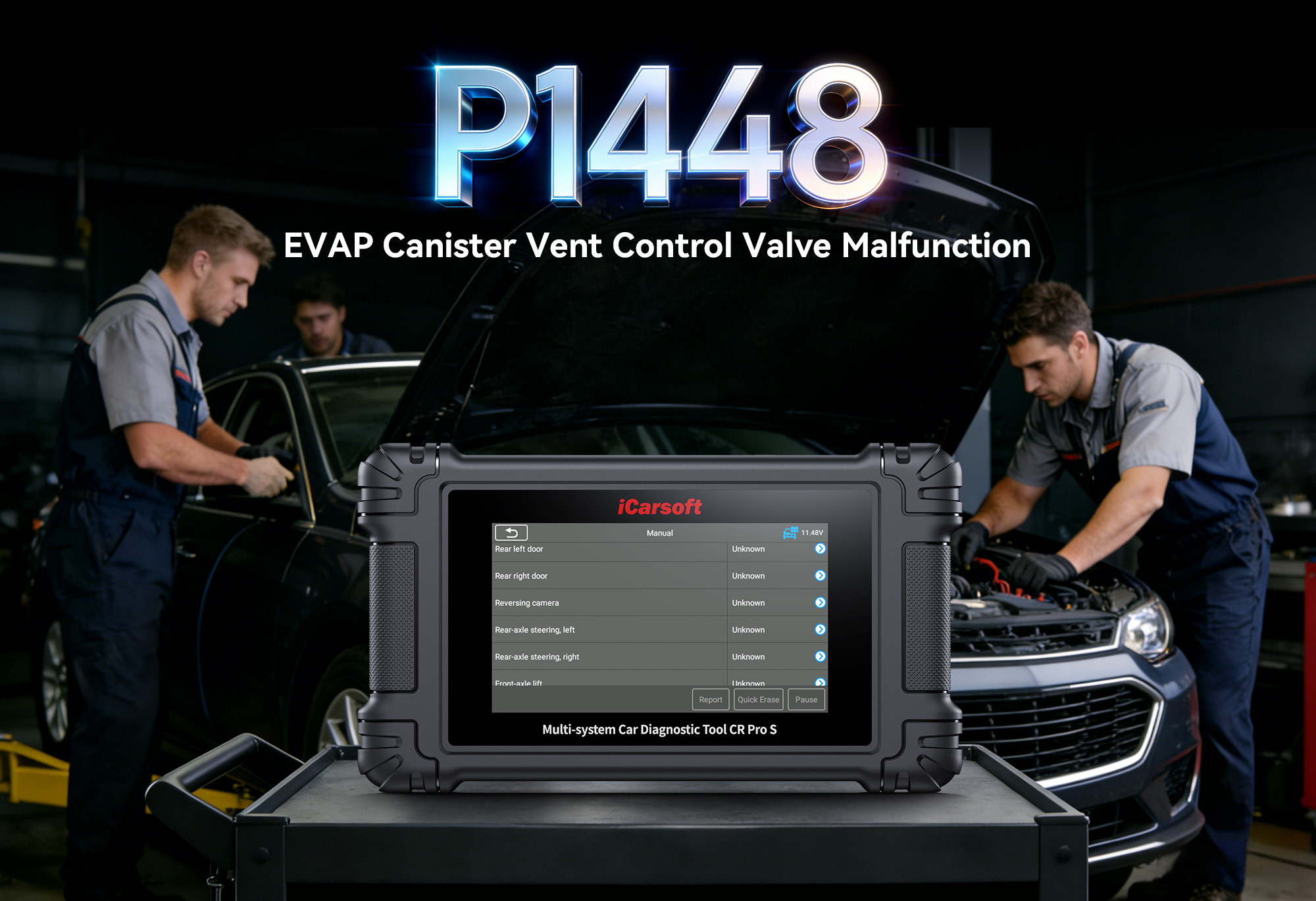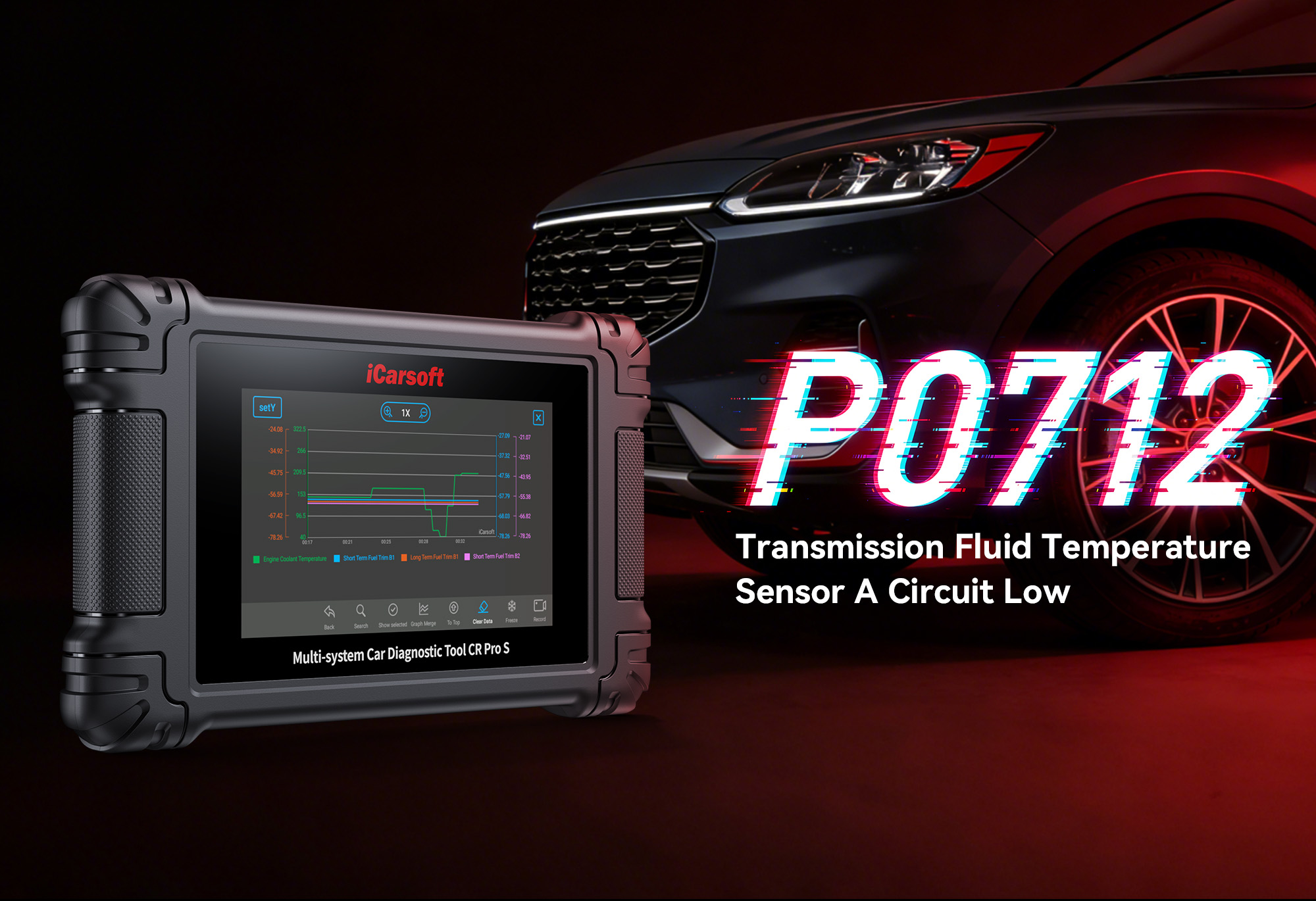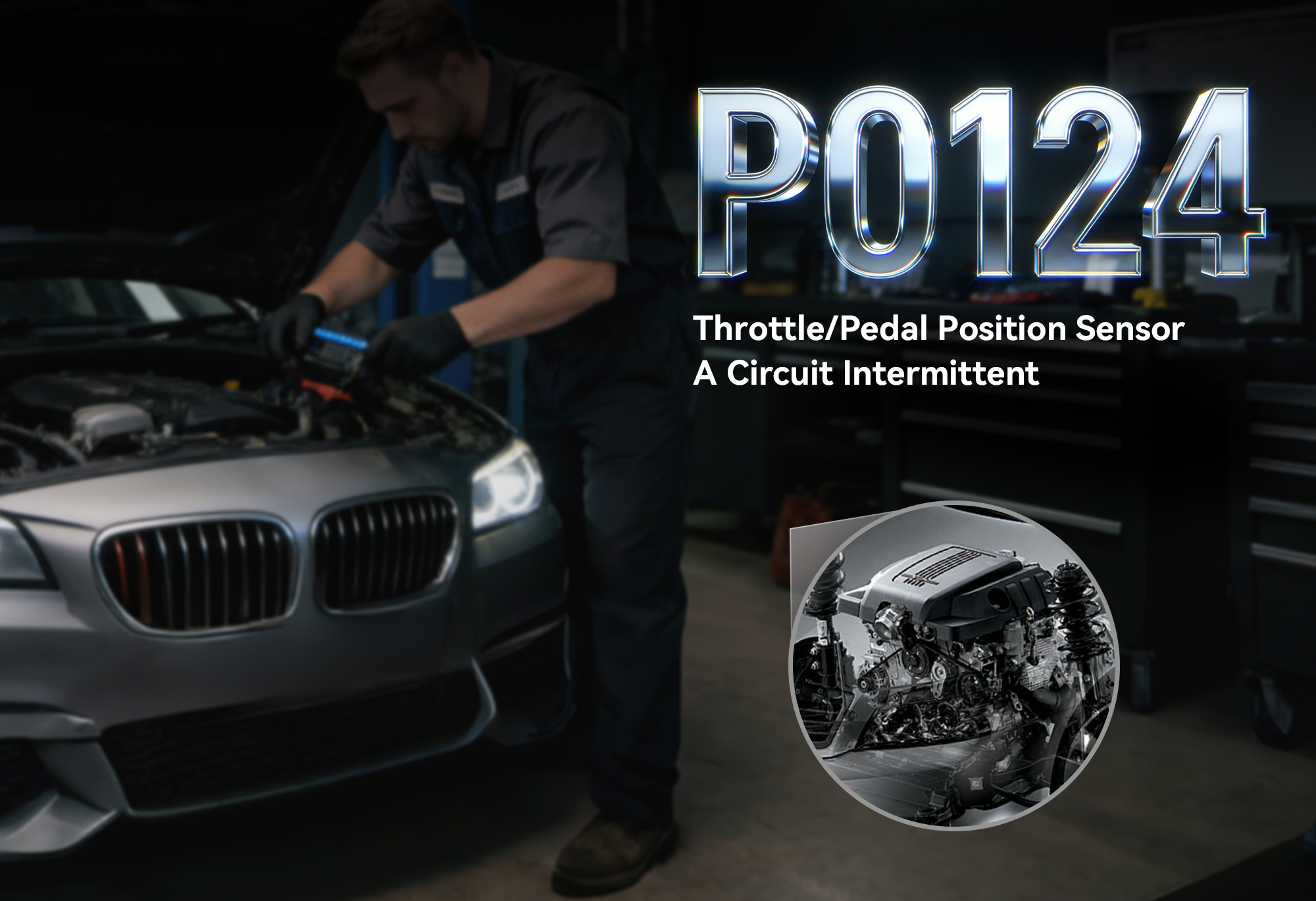Diagnose & Clear P2101 with iCarsoft CR MAX BT: Fix Throttle Actuator Control System - Forced Limited Power
If your check engine light illuminates and your vehicle suddenly loses power—capping speed at 30–40 mph—a scan will likely return P2101. This critical OBD-II code stands for "Throttle Actuator Control System - Forced Limited Power," indicating the Engine Control Module (ECM) has detected a malfunction in the electronic throttle body (ETB) or its circuit. To protect the engine from damage, the ECM triggers "limp mode," restricting power until the issue is resolved.
Modern vehicles use electronic throttle bodies (no mechanical cables) to regulate airflow. The throttle actuator—controlled by the ECM—adjusts the throttle plate based on accelerator input. When P2101 occurs, the ECM loses reliable communication with the actuator or detects a mechanical failure, forcing limp mode to prevent overrevving, stalling, or engine damage. Basic scanners can’t test actuator movement or ECM communication, but the iCarsoft CR MAX BT’s advanced features simplify diagnosis.
 iCarsoft CR MAX BT displaying throttle plate position, actuator voltage, and bi-directional control status for P2101 diagnosis
iCarsoft CR MAX BT displaying throttle plate position, actuator voltage, and bi-directional control status for P2101 diagnosis
Understanding P2101: Causes & Key Symptoms
A faulty throttle actuator system disrupts airflow regulation, leading to immediate performance issues and safety risks:
Key Symptoms of P2101
-
Limp Mode Activation: Most obvious sign—power drops sharply, speed is capped at 30–40 mph, and acceleration becomes unresponsive.
-
Check Engine Light: Illuminates within seconds of the fault (often paired with P2110: "Throttle Stuck Open" or P2112: "Throttle Stuck Closed").
-
Unresponsive Accelerator: Pressing the gas pedal has little effect, or the engine revs without increasing speed.
-
Rough Idle/Stalling: Throttle plate may stick partially closed, causing unstable idle or sudden stalling at stops.
-
Throttle Warning Light: Vehicles like Ford/Chevrolet display a dedicated "Throttle Control" light on the dashboard.
-
ECM Reset Failures: Turning the engine off/on temporarily resets the code, but limp mode returns within minutes of driving.
Common Causes of P2101
|
Cause
|
Description
|
|
Faulty Electronic Throttle Body (ETB)
|
Internal motor failure or stuck throttle plate prevents the actuator from adjusting airflow—accounts for ~45% of P2101 cases.
|
|
Damaged Wiring/Connector
|
Frayed wires, corroded terminals, or loose plugs disrupt signal/voltage flow between the ECM and ETB (worsened by engine heat).
|
|
Dirty Throttle Body
|
Carbon buildup on the throttle plate or ETB bore jams movement, causing erratic position readings (common in high-idle vehicles).
|
|
Failed Throttle Position Sensor (TPS)
|
The TPS (integrated into the ETB) sends incorrect plate position data to the ECM, triggering a fault.
|
|
Low Battery Voltage
|
A weak battery (<12V) disrupts the ECM’s ability to power the throttle actuator, causing intermittent faults.
|
|
ECM Malfunction (Rare)
|
Corrupted software or hardware issues misinterpret actuator data, paired with communication codes (e.g., U0100).
|
Why iCarsoft CR MAX BT Excels at Diagnosing P2101
The CR MAX BT solves the biggest P2101 challenges—distinguishing mechanical vs. electrical faults and avoiding costly ETB replacements:
Bi-Directional Throttle Control
Send direct commands ("10% Open," "50% Open") to the ETB—verify plate movement to rule out mechanical jams or failed motors.
Live Throttle Data Tracking
Monitor throttle plate position, actuator voltage, and TPS readings in real time—spot discrepancies (e.g., 80% accelerator input = 10% plate position).
Circuit Continuity & Voltage Tests
Precisely measure resistance/voltage in the ETB circuit to locate shorts, opens, or corroded connections (no guesswork for wiring faults).
3D Component Diagrams
Preloaded schematics show ETB location (intake manifold), wiring paths, and pinouts for 80+ makes (Ford, Toyota, BMW, Hyundai).
ECM Communication Checks
Verify if the ECM sends/receives signals to the ETB—rule out module-specific faults before replacing the throttle body.
Throttle Relearn Function
Guides you through ECM "throttle relearn" after repairs—critical for resetting adaptive values and restoring normal operation.
Step-by-Step: Diagnose P2101 with iCarsoft CR MAX BT
-
1. Connect & Confirm the Code (and Limp Mode)
Plug the CR MAX BT into the OBD-II port and pair with the app (30-second Bluetooth setup).
Select your vehicle via Auto VIN Scan (instant VIN read) or manual entry (make/model/year/engine—critical for ETB specs).
- Navigate to Engine > Fault Codes > Read Codes to confirm P2101.
- Tap Code Details for vehicle-specific insights (e.g., "Toyota: Throttle Actuator Voltage = 3V – Below 9V Threshold").
- Check for related codes (P2110/P2112)—these narrow down whether the ETB is stuck open/closed.
-
2. Locate the Electronic Throttle Body (ETB)
Use the CR MAX BT to avoid misidentification:
- Go to Component Location > Engine > Intake System > Electronic Throttle Body.
- The 3D diagram shows: The ETB is mounted on the intake manifold (connected to the air intake hose) with a 6–8 wire connector (power, ground, signal).
- Note: For turbocharged engines, the ETB is often near the intercooler outlet.
-
3. Test Actuator Response (Bi-Directional Control)
Active testing is critical to isolate mechanical faults:
- Ensure the vehicle is in Park with the parking brake engaged, engine off.
- Navigate to Special Functions > Engine > Throttle Control > Actuator Test.
- Select incremental position commands: "10% Open" → "50% Open" → "100% Open":
- Functional ETB: Visible throttle plate movement (look through the air intake hose) + live data updates (e.g., "Throttle Position: 50%").
- No movement: Stuck plate (carbon buildup) or failed actuator motor.
-
4. Analyze Live Throttle System Data
Verify electrical and communication functionality:
- Start the engine (it may stay in limp mode—this is normal).
- Go to Engine > Live Data > Throttle System and monitor 3 key metrics:
1. Throttle Plate Position: Should match accelerator input (e.g., 70% input = ~70% position). P2101 = stuck at <10%.
2. Throttle Actuator Voltage: Normal = 9–14V. <8V = low power (check battery/wiring).
3. TPS Voltage: Should rise smoothly (0.5V closed → 4.5V open). Erratic spikes = faulty TPS.
- If input and position don’t match, the ETB or circuit is faulty.
-
5. Inspect the ETB, Connector & Wiring
Address physical damage or contamination:
ETB Inspection:
- Turn off the engine, disconnect the ETB connector, and remove the air intake hose.
- Check for: Carbon buildup on the plate/bore (use a flashlight), stuck plate (gently move with a screwdriver—should move freely), or cracked housing.
Connector Check:
- Examine the plug for corrosion (white/green deposits), bent pins, or water intrusion. Clean with electrical contact cleaner.
Wiring Inspection:
- Follow wiring from ETB to ECM (app diagram). Look for frayed insulation (near exhaust components) or burned wires (short circuit sign).
-
6. Test the Throttle Actuator Circuit’s Electrical Function
Validate electrical health (40% of P2101 cases are wiring-related):
Battery Voltage Test:
- Use the app’s Multimeter Function: Engine off = 12.4–12.7V; running = 13.5–14.5V. Low voltage = charge/replace battery.
Actuator Resistance Test:
- Disconnect the ETB. Measure resistance across motor pins (app’s ETB Pinout Guide). Normal = 5–15 ohms. Infinite/0 ohms = replace ETB.
Continuity & Ground Tests:
- Check continuity between ETB signal pins and ECM: >1 ohm = broken wire (repair with heat-shrink connectors).
- Measure ground resistance (ETB ground pin → chassis): <1 ohm = good; >5 ohms = clean/replace ground strap.
-
7. Clean or Replace the Throttle Body
Fix based on test results:
Cleaning (If Carbon Buildup/Stuck Plate):
- Use throttle body cleaner (not carburetor cleaner—damages ETB seals).
- Spray cleaner onto a soft cloth and wipe the plate/bore—never spray directly into the ETB (protects the motor).
- Reinstall the ETB and air intake hose.
Replacement (If Motor/TPS Faulty):
- If resistance tests fail or the actuator doesn’t respond, replace the ETB (use OEM parts—check the app’s Part Lookup for fit).
-
8. Perform Throttle Relearn & Clear P2101
Reset the ECM to restore normal operation:
Throttle Relearn:
- Navigate to Special Functions > Engine > Throttle Control > Throttle Relearn.
- Follow app prompts (e.g., "Ignition on for 30s → off for 10s → start engine")—this resets adaptive values.
Clear the Code:
- Go to Engine > Fault Codes > Clear Codes and select P2101. The app confirms deletion.
-
9. Validate the Repair
Confirm limp mode is disabled and the ETB works correctly:
- Start the engine: Check engine light stays off; limp mode doesn’t activate.
- Test drive: Accelerate to 60 mph—verify responsive throttle, no power loss, and smooth shifting.
- Recheck live data: Throttle position matches accelerator input perfectly.
- Re-scan: No P2101 recurrence = successful repair.
Preventing P2101 Recurrence
The CR MAX BT helps maintain a healthy throttle system long-term:
-
ETB Maintenance: Use the app’s Service Reminder to clean the throttle body every 30,000 miles (20,000 miles for idling-heavy vehicles like trucks).
-
Battery Care: Set quarterly reminders to check battery voltage—weak batteries cause intermittent throttle faults.
-
Connector Protection: Apply dielectric grease to the ETB connector annually to repel moisture and corrosion.
-
Wiring Checks: Inspect throttle actuator wiring during oil changes—spot fraying or heat damage early.
-
Regular Scans: Use the Quick Scan monthly to monitor throttle data—catch minor issues (e.g., rising TPS voltage) before they trigger limp mode.
Conclusion
P2101’s forced limited power mode is stressful and inconvenient, but the iCarsoft CR MAX BT turns complex throttle system diagnostics into a straightforward process. By combining bi-directional control, live data tracking, and relearn functionality, it helps you pinpoint faults—whether it’s a dirty ETB, faulty wiring, or failed actuator—and restore full power safely.
Unlike basic scanners that leave you guessing, the CR MAX BT avoids costly misrepairs (e.g., replacing a $300 ETB when a $20 wire is broken). With this tool, you can diagnose, repair, and validate P2101 yourself, ensuring your vehicle’s throttle system operates reliably for miles to come.
FAQs About P2101 Code
Q: Can I drive my vehicle with P2101?
A: Only for short, emergency trips (5–10 miles). Limp mode limits speed to 30–40 mph, making highway driving unsafe. Prolonged driving may cause stalling or engine damage—fix P2101 immediately.
Q: How much does it cost to fix P2101?
A: Costs vary: ETB cleaning = $15–$30 (DIY); wiring repair = $20–$60; ETB replacement = $150–$400 (DIY) or $300–$700 (professional); battery replacement = $100–$200. The CR MAX BT saves money by avoiding unnecessary ETB replacements.
Q: Why does P2101 come back after cleaning the ETB?
A: Common reasons: 1) Incomplete cleaning (carbon buildup remains in the bore); 2) Faulty TPS (integrated into ETB, not fixed by cleaning); 3) Wiring/vacuum leaks (not addressed); 4) Missing throttle relearn (ECM still uses old adaptive values). Re-run the CR MAX BT’s actuator test and circuit checks.
Q: Is the throttle relearn necessary after fixing P2101?
A: Yes—critical. The ECM stores adaptive values for the old (faulty) throttle body; without a relearn, it may still trigger limp mode. The CR MAX BT’s guided relearn ensures the ECM recognizes the repaired ETB.
Q: How do I know if I need to clean or replace the ETB?
A: Use the CR MAX BT’s actuator test: If the plate moves freely after cleaning, no replacement is needed. If the plate stays stuck or the motor shows 0/infinite resistance, replace the ETB. The app’s resistance test and live data will confirm this.

 iCarsoft CR MAX BT displaying throttle plate position, actuator voltage, and bi-directional control status for P2101 diagnosis
iCarsoft CR MAX BT displaying throttle plate position, actuator voltage, and bi-directional control status for P2101 diagnosis



